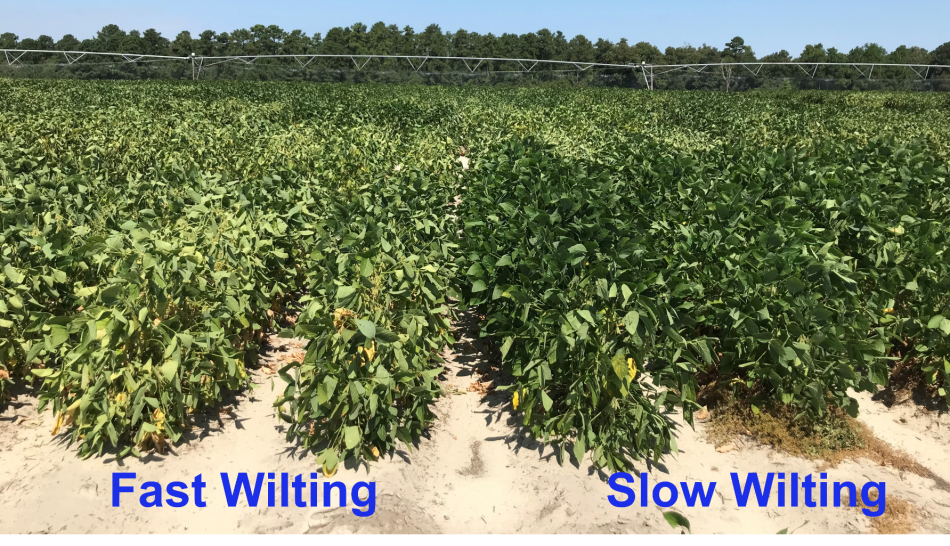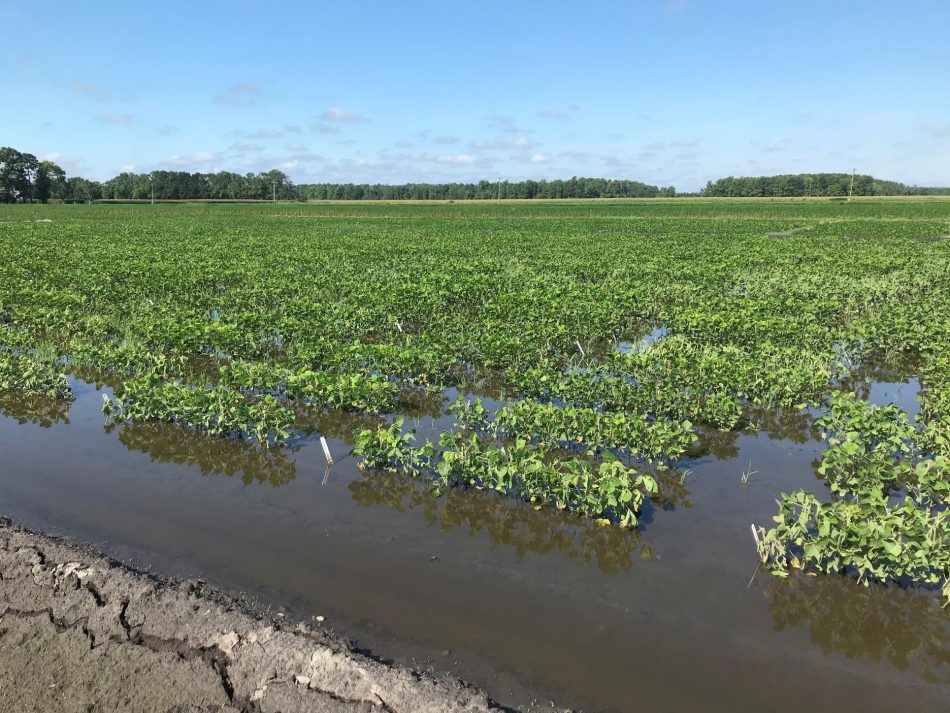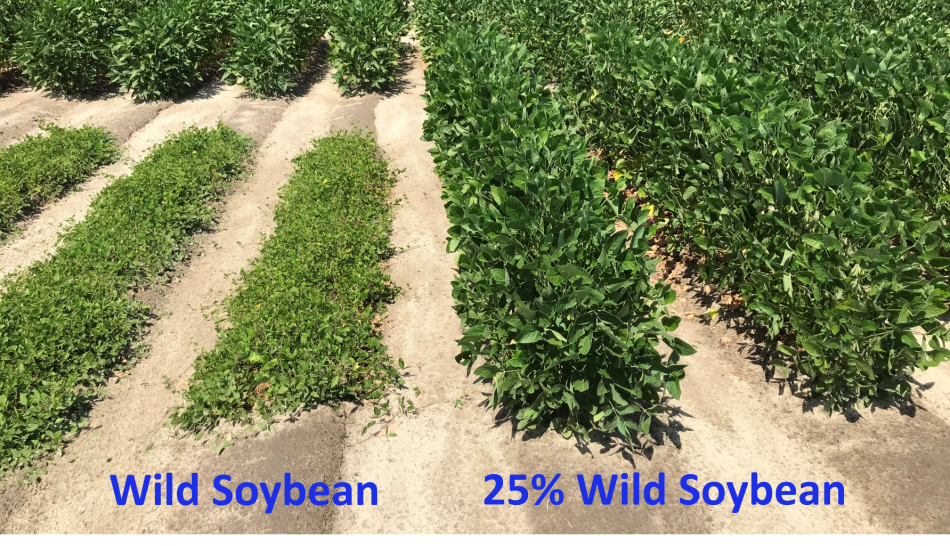Ben Fallen

USDA Assistant Professor
USDA-ARS Plant Science Research Building, 3127 Ligon St. Raleigh, NC 27607
919) 513-1480 bdfallen@ncsu.eduBio
Education
PhD., Plant Sciences, Soybean Breeding & Genetics Program.
December 2012, University of Tennessee, Knoxville, TN.
Dissertation: Selective Genotyping for Marker Assisted Selection Strategies for Soybean Yield Improvement.
M.S., Plant Sciences.
August 2009, University of Tennessee, Knoxville, TN.
Thesis: Soybean Enhancement for Biodiesel Production.
B.S., Crop and Soil Environmental Sciences, Biotechnology and Genetics option.
May 2006, Virginia Polytechnic Institute and State University (Virginia Tech),
Blacksburg, VA.
Area of Expertise
Drought Research:
Prior to the 1980s drought tolerance was a low-priority research objective in soybean breeding programs. A major reason was that reliable field screening methods for drought tolerance were difficult to implement and there was no known genetic variability for drought. However, drought was and is still considered to be a major factor causing low yield and lost income for soybean farmers in the US. So, drought research in soybean was begun by the USDA-ARS Soybean and Nitrogen Fixation Unit (SNFU) in Raleigh, NC in 1986, led by research geneticist, Dr. Tommy Carter. Every year approximately 5,000 plots are evaluated by researchers at the SNFU for drought tolerance. Our research shows that drought and heat tolerance can raise yields by 5 to 8 bu/ac under stress. However, breeding for drought and/or heat tolerance can be difficult and understanding the mechanisms can be challenging. There also is a strong need to develop and refine high through-put characterization of germplasm in plant breeding programs, so that drought and heat tolerant germplasm can be readily adapted in many different crops.

Flood Research:
Farmers have experienced very wet weather for at least some part of most growing seasons in the last decade due to hurricanes, floods and other events. Flooding that is associated with heavy rainfall can curtail crop performance, especially in areas where water tables tend to be high and land elevation is low. Flooding reduces the oxygen supply to the roots, builds up toxic respired carbon dioxide in the soil and promotes crippling root diseases. In addition, many soybean growing regions throughout the U.S. can be impacted by chronically wet or waterlogged conditions, even when there is no standing water. Waterlogging (chronically wet soil but no standing water) can cause slow growth, poor leaf color, and spindly plants, reduce yield and decrease the value of the crop. The USDA-ARS Soybean and Nitrogen Fixation Unit (SNFU) in Raleigh, NC evaluates 1000s of new varieties and germplasm every year. Interestingly, our new research suggests that drought and flood tolerances may be related. This discovery could improve the development of abiotic stress tolerant soybean varieties, which is essential in pursuing agricultural sustainability.

Genetic Diversity Research:
Wild soybean is the ancestor of domesticated soybeans produced today and is mainly distributed in the Southeast and Far East Asia including China, Japan, Korea, Taiwan and Russia. Wild soybean is an annual, weed-like, climbing pioneer of secondary seccessions that look very different from today’s domesticated soybean. The average seed size for wild soybean is half the average seed size for domesticated soybean. Seed coat color for wild soybean can also be distinct, ranging primarily from black to green, whereas the primary color of domesticated soybean is yellow. Despite what may sound like undesirable attributes, wild soybean has been shown to contain a genetic treasure trove of genes for higher oil and protein contents, drought resistance, high heat tolerance, disease resistance, pest resistance and other important traits.

Publications
- Willette, A., B. Fallen, H. Bhandari, C. Sams, F. Chen, V. Sykes, C. Smallwood, K. Bilyeu, Z. Li and V. Pantalone. Agronomic performance of high oleic, low linolenic soybean in Tennessee. J. Am. Oil Chem. Soc. 98(8):861-869. doi:10.1002/aocs.12517.
- Wilkes, J., C. Saski, M. Klepadlo, B. Fallen and P. Agudelo. 2020. Quantitative trait loci associated with rotylenchulusreniformis host suitability in soybean. Phytopathology, 110(9), 1511-1521. doi:10.1094/PHYTO-02-20-0035-R
- Lahiri, S., D.D. Reisig, D. D., F.P. Reay-Jones, J.K. Greene, T.E. Carter, R.F. Mian, and B.D. Fallen. 2020. Soybean host plant resistance to megacopta cribraria (hemiptera: Plataspidae) and the potential role of leaf trichome density. Environmental Entomology, 49(1), 88-97. doi:10.1093/ee/nvz158.
- Lahiri, S., D.D. Reisig, D. D., F.P. Reay-Jones, J.K. Greene, T.E. Carter, R.F. Mian, and B.D. Fallen. 2020. Mechanisms of soybean host-plant resistance against megacopta cribraria (hemiptera: Plataspidae). Environmental Entomology, 49(4), 876-885. doi:10.1093/ee/nvaa075
- Narayanan, S.K, Z.S Zoong-Lwe, N Gandhi, R. Welti, B.D. Fallen, J.R. Smith and S. Rustgi. 2020. Comparative Lipidomic Analysis Reveals Heat Stress Responses of Two Soybean Genotypes Differing in Temperature Sensitivity. Plants 9:457.
- Narayanan, S.K. and B.D. Fallen. 2019. Evaluation of Soybean Plant Introductions for Traits that can Improve Emergence under Varied Soil Moisture Levels. Agr. J.9(3), doi.org/10.3390/agronmy9030118.
- Harrison, G.F., B.D. Fallen and S. N. Narayanan. 2018. Characterization of a Soybean (Glycine max L. Merr.) Germplasm Collection for Root Traits. PLOS ONE. 13(7): e0200463.
- Smallwood, C.J., B.D. Fallen, V.R. Pantalone, C.N. Hatcher and P. Arelli. 2018. Registration of ‘TN09-008’ Soybean Cyst Nematode-Resistant Cultivar. J. Plant Reg. 12:309-313.
- Smallwood, C.J., A.M. Saxton, J.D. Gillman, H.S. Bhandari, P.A. Wadl, B.D. Fallen, D.L. Hyten, Q. Song, V.P. Pantalone. 2018. Context-specific Genomic Selection Strategies Outperform Phenotypic Selection for Soybean Quantitative Traits in the Progeny Row Stage. Crop Science. 59(1):54-67.
- Smallwood, C., B. D. Fallen, and V. R. Pantalone. Registration of ‘TN11-5140’ Soybean Cultivar. J. Plant Reg., 12:203-207.
- Fallen, B.F. and E. Shipe. Registration of ‘Agustina’ Soybean. J. Plant Reg. 2017 11: 256-262.
- Pantalone, V. R., C. Smallwood, and B. D. Fallen. Development of ‘Ellis’ Soybean with High Soymeal Protein, Resistance to Stem Canker, Southern Root Knot Nematode, and Frogeye Leaf Spot. J. Plant Reg. 11:250-255.
- Smallwood C.J., J.D. Gillman, A.M. Saxton, H.S. Bhandari, P.A. Wadl, B.D. Fallen, P.B. Cregan, D.L. Hyten and V.R. Pantalone. Identifying and Exploring Significant Genomic Regions for Soybean Yield, Fatty Acids, Protein, and Oil. J. Crop Sci. Biotech. 20:243-253.
- Fallen, B.F. and E. Shipe. Agustina Soybean. U.S. pat. PV201700010. Nov. 16, 2016.
- Fallen, B.D, F.L. Allen, D.A. Kopsell, A.M. Saxton, L. McHale, J.G. Shannon, S.K. Kantartzi, A.J. Cardinal, P.B. Cregan, D.L. Hyten, and V.R. Pantalone. Selective Genotyping for Marker Assisted Selection Strategies for Soybean Yield Improvement. Plant Genetics, Genomics, and Biotechnology 2:95-119.
- Fallen, B.D., C.N. Hatcher, F.L. Allen, D.A. Kopsell, A.M. Saxton, P. Chen, S.K. Kantartzi, P.B. Cregan, D.L. Hyten, and V.R. Pantalone. Soybean Seed Amino Acid Content QTL Detected Using the Universal Soy Linkage Panel 1.0 with 1,536 SNPs. J. Plant Genome. Sci. 3:68-79.
- Fallen, B. D., Rainey, K., C. E. Sams, D. A. Kopsell, and V. R. Pantalone. Evaluation of Agronomic and Seed Characteristics in Elevated Oleic Acid Soybean Lines in the South-Eastern US. J. Am. Oil Chem. Soc. 89:1333-1343.
- Fallen, B.D., V.R. Pantalone, C.E. Sams, D.A. Kopsell, S.F. Vaughn and B.R. Moser. 2011. Effect of Soybean Oil Fatty Acid Composition and Selenium Application on Biodiesel Properties. J. Am. Oil Chem. Soc. 88:1019-1028.